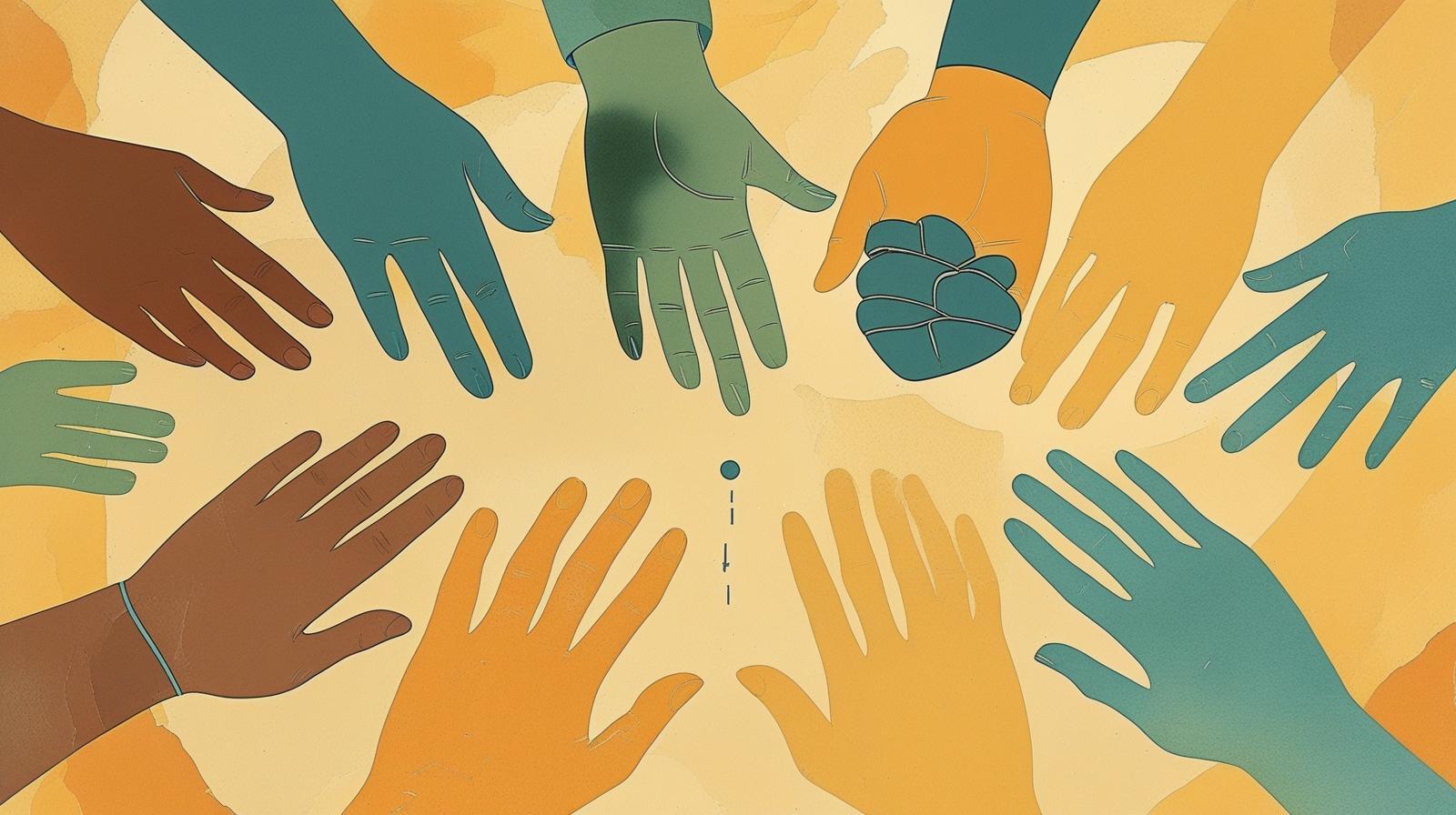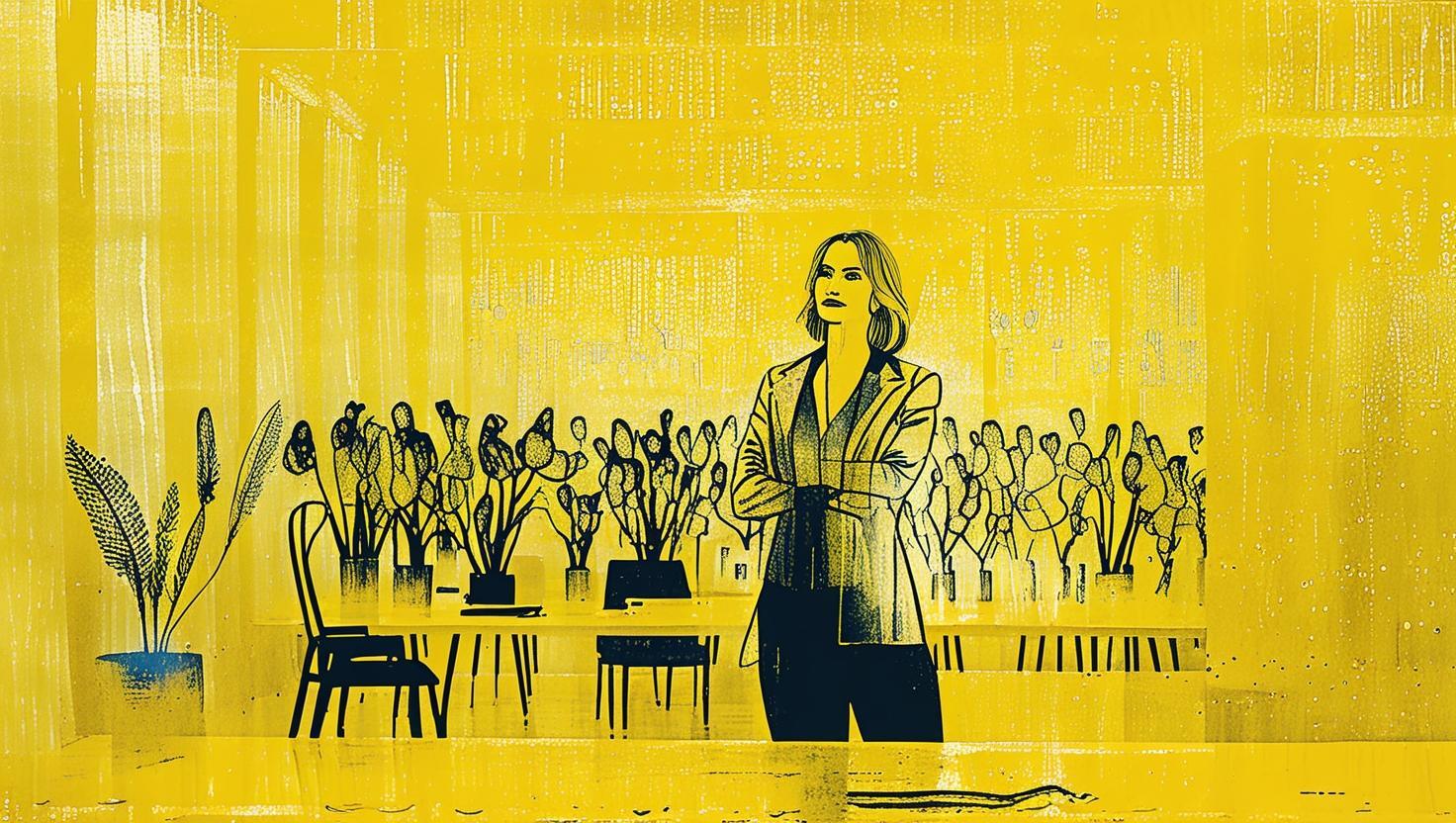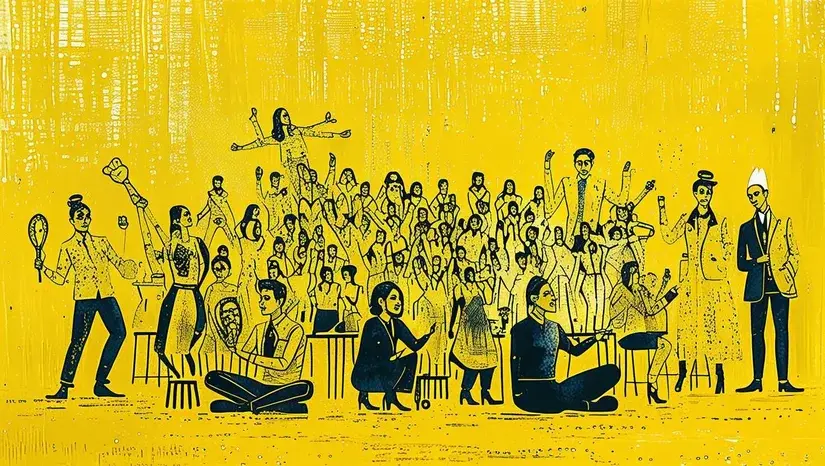Hidden Barriers to Leadership Success: How Executive Coaching Helps
Discover the five hidden barriers that hold leaders back, fear of failure, imposter syndrome, resistance to change, low emotional intelligence, and...
Insights to help leaders and organisations thrive and drive growth & inclusion.
Geraldine Gallacher Keynote Speaker
Speaker, podcaster, author and master coach.
Our resource hub for working parents, carers and managers navigating work-life balance.
Real stories from leaders driving inclusion & equity in today’s shifting world.
Fortnightly insights on leadership, equity & the future of work. For senior leaders & curious thinkers.
A monthly digest of the shifts shaping how we lead and work.
10 min read
 Michelle Weston | CRO and Executive Coach
:
Jul 13, 2025 12:00:00 AM
Michelle Weston | CRO and Executive Coach
:
Jul 13, 2025 12:00:00 AM

Discover why empathy is the missing link to diversity and inclusion. Explore neuroscience, unconscious bias, and leadership strategies for real change.
One of the most misleading beliefs about workplace diversity and inclusion is that if the rational benefits of greater inclusivity are explained, alongside how unconscious biases could be influencing our behaviours – that armed with this information, we will change. This belief still underpins most programmes aimed at addressing workplace diversity and inclusivity. This is despite the overwhelming evidence that the needle has not materially moved over the last decade in workplace equality, including often in those organisations that have employed such programmes.
Understanding why current programmes haven’t had the desired effect and what should change to increase the likelihood of their success going forward may lie in considering the neuroscience of not just how we make decisions, but what drives our decision-making.

Billions of neurological processes are involved in each of the decisions we make every day. Consciously or otherwise, when we make a decision, we pull up the information we need and then our brain works to fill in whatever data may be missing. Take this image for example, known as the Kanizsa Triangle¹, which helps to show us how our brains can fill in the gaps in information. When we look at this image, we see a white, upright equilateral triangle in the middle. However, this triangle does not exist, our brains merely jumped to that conclusion. Given the number of decisions we make each day, our brains select the ‘easiest’ option; termed the ‘path of least resistance’².² This means that unconsciously, we instantly and automatically categorise every situation based on our previous experience. This clearly has implications on how we interact with the world. The repetition of patterns and behaviours that our brains haven’t yet proven to be ‘false’ lead us to typically continue to make the same assumptive leaps about situations, experiences and people.
Consider how this could impact how we operate in the workplace. For example, imagine a manager who is about to choose someone from their team to undertake a piece of work. There may not be a particularly clear determining factor, for example a team member with relevant expertise. So, the brain steps in and makes assumptions about who would be the best to choose. Bearing in mind the ‘path of least resistance’ principle, then the manger is prone to picking someone who they feel that they understand or ‘get’. That person is more likely to be someone who reflects themselves; who either looks like them or has a similar upbringing or attitude. Because, when someone reminds us of ourselves, then we assume that they must share attributes with us. A study at the University of Royal Holloway has shown that when someone looks like us, we automatically believe that they are a trustworthy person.³
The question is- Is this what contributes to an overt presence of ‘Mini-Me’s’ within an organisation? Mini-Me’s who are likely to benefit disproportionally from opportunities and advancement.
However, we also know that our brain structure can change and that we can work to adapt our neurological pathways – through awareness, repetition and practice4. Most organisations have understood this and sought to develop their employees and help them understand the consequences of how they make decisions; this has manifested in unconscious bias or diversity training.
Diversity training attracts the spending power of big corporates and smaller businesses alike. One of the biggest industries that serves corporate needs, an estimated $8 billion is spent by US companies alone each year.5 The size of this industry perhaps reflects that beyond the moral argument for better diversity and real inclusion, there is also mounting evidence that supports the business benefits. By any good standard, diversity and inclusion in organisations have been shown to benefit: innovation, economic performance, technology-ready, GDP growth, problem-solving, creativity, talent retainment, and leadership.6
The main vehicle of diversity and inclusion training is unconscious bias programmes. First popularised by the ‘Implicit-Association Test’ created in 1998 (Harvard’s version is called ‘Project Implicit’), unconscious bias training has been adopted as the standard approach to improving diversity. The initiative, run by companies from Google,7 to Starbucks8 and Lloyds Bank,9 brings awareness to the biases we all have, and highlights how they affect our decision-making and other such processes, at work and in wider life. So, has what we set out to achieve been realised? Unfortunately, not. Progress has not been anywhere near as much as hoped, expected or required in society today. For example: in the UK, BAME professionals still make up just 3.3% of Chairs, CEOs and FDs. And BAME representation on UK boards has decreased, from almost 9% in 2018, to only 7.4% in 2019.10 This lack of representation is repeated across the globe.
Why is it that diversity training does not appear to have worked? The intention is clearly there, the carrot’s big enough that we don’t need a stick. However, studies overwhelmingly show that bias training succeeds in raising awareness but fails to change behaviours11. We posit that unconscious bias training has failed in several significant ways; for example, in the absence of equipping participants with the skills to act on their newfound awareness and further in too often generating a backlash by focusing on negative behaviours. However, perhaps most critically, programmes often only appeal to participants’ cognitive understanding of the issues. To recognise the significance of this, we must return to the neuroscience of decision making.
Decision-making has traditionally been placed into two camps: the rational / analytical and intuitive/emotive. Given the number of decisions we make every day, perhaps as many as 35,00012, it would be impossible for all of these to be made consciously, or indeed to be based entirely in rationality and logic. In much of classical philosophy, including the likes of Plato, Kant and Hume, a sharp dichotomy was made between the rational and emotive.13 They argued that the best and most accurate type of decision-making is via rationality alone. This has influenced the thinking behind many of our modern activities and processes, including in business and organisations.
“Modern organisations are sustained by belief systems that emphasise the importance of rationality. Their legitimacy in the public eye often depends on their ability to demonstrate rationality and objectivity in action”14
As a purely rational process, it would mean that context or emotion does not play a part in effective decision-making. However, as technology advances, so too does our ability to understand brain structures and the neurobiological basis of human thought and emotion. Neuroscientists now understand that our emotional brain accounts for most of our full cognition15 and is an essential function of reasoning. Consider how patients with brain-damage who are entirely lacking in emotion, struggle to make the most elementary decisions and to act16.
“emotions are…the dominant driver of most meaningful decisions in life”17
This does not mean that decisions are irrational but rather, that the idea of pure rationality is misguided.
A flaw in the approach of current diversity programmes is that whilst they typically encourage participants to understand on a rational level; how our experience differs to others, how our actions can have unintended consequences and how our decisions can be influenced by bias, they fail to engage our emotional brain. To affect any kind of change we now know that emotional engagement is essential. The first steps taken by current programmes have enabled us to recognise the problem of bias and see how it manifests in the workplace. The next step should be to change behaviours, helping people see their role and giving them the tools to act. Diversity training, at least in its current form, will never be able to fully perform this function.

Nicholas Kristof, columnist and Pulitzer Prize winner, has spoken about the importance of empathy as a starting point in addressing issues of race or gender.18 Empathy gives us the ability to activate not just our rational but also our emotional brain. Importantly, it also provides the opportunity for us to respond and take action to help others that are suffering.
Empathy is a relatively new concept, born at the turn of the 20th century. It has attracted extensive research in the field of psychology and more recently has become an important topic in social neuroscience.19 In practice, it is a complex process of psychological conjecture where what we see, remember and reason is combined with what we know, to allow some understanding into the thoughts and feelings of others.20 Whilst there is debate on the definition of empathy, there appears to be general agreement that it includes both cognitive and emotional processes.21 Cognitive empathy is perhaps best understood as grasping the ‘perspective’ of others as well as their emotional state without combining those feelings with our own. Affective empathy is the largely automated process through which an emotional response is triggered in us.22
Perhaps one of the most critical questions in the study of empathy is how we can know the thoughts and feelings of another and critically, what leads us to care and respond to the suffering of another – to act. Perspective taking combined with affective empathy, can lead us to respond directly to another’s suffering. However, feeling for another’s suffering, which some call compassion, is the dimension of empathy most cited to explain what leads us to respond to another.23
Empathy then, is an important intersection between the rational and the emotive; to not only intellectually see someone’s perspective, but to feel it too; to feel for others and move us to action.24
Diversity and inclusion programmes going forward should help us gain perspective, both our own and someone else’s. Perspective taking is a faculty that we all possess to varying degrees, where we imagine what it would be like to look at the world from another’s psychological point of view.25Being able to put ourselves in the shoes of someone who is unlike us may provide us with a level of understanding about their situation that can be very powerful. Perspective taking has been shown to improve attitudes towards various minority groups and stigmatised populations.26
However, studies also show that in isolation, perspective taking may not be enough to drive behaviours to change.27 We can see how just cognitively engaging with the issue may not be enough. A better approach is to “try harder to ‘get’ another person’s perspective instead of trying to ‘take‘ it”28 and engage emotionally. Activating all these aspects of empathy has the potential to push us from caring, to caring enough to do something about it. This has significant implications for inclusive behaviours. But the potential benefits of empathy go beyond the impact on diversity and inclusivity.
Empathy is perhaps one of the most critical skills for leading today. With increasingly diverse teams and problems to solve, and the movement and pace of work constantly changing, leaders in this new context need to find ways to empower the talent around them and unlock the energy and innovation of others. Leaders as coaches – first popularised over a decade ago – is only now coming into its own, offering an approach to inspire others and help them to develop. Central to this approach are the skills of asking, listening and empathising.2930
The answer is not categorical, but increasingly evidence does suggest that empathy can be learnt and developed.3132 Many empathy programmes have focused on health professionals, where improvements in positive patient outcomes have been linked to improved levels of empathy in the practitioner. Here, programmes have approached empathy as a trainable skill. Thinking of it in this way rather than as a trait that we are born with, and either possess or don’t, has significant design implications for diversity and inclusion programmes going forward. Whilst empathy is unlikely to be the silver bullet to the problems of diversity and inclusion, organisations are beginning to acknowledge that this traditionally ‘soft skill’ has a significant part to play in increasing positive impact. Empathy as a leadership skill, and indeed for everyone, is being recognised as a powerful tool for now and the future of work.
The limited success of unconscious bias training is in part because it does not consider the influence and impact of emotion in affecting change. To turn awareness into engagement and action, empathy – specifically compassionate empathy – is a skill that should be developed and practiced. Empathy allows us to truly utilise our rational and emotional brain, reflect and consider broader perspective and adjust the lenses through which we tackle not only the day-to-day in our organisations, but to understand our colleagues, clients and customers.
References:
1. Weisstein, E., “Kanizsa Triangle”, Mathworld, <https://mathworld.wolfram.com/KanizsaTriangle.html> (accessed 23 December 2019)
2. Beaton, C., “We’re Wired to Take the Path of Least Resistance”, Psychology Today, 2017, < https://www.psychologytoday.com/gb/blog/the-gen-y-guide/201703/were-wired-take-the-path-least-resistance> [accessed 19 December 2019]
3. Farmer, H., et al., “Trust in Me: Trustworthy Others Are Seen as More Physically Similar to the Self”, Pscyhological Science, Vol. 25, Issue 1, 2013, < https://journals.sagepub.com/doi/10.1177/0956797613494852> (accessed 19 December 2019)
4. Rock, D., Schwartz, J., ‘The Neuroscience of Leadership’, Strategy + Business, Issue 43, 2006, <https://www.strategy-business.com/article/06207?gko=f1af3> [accessed 3 January 2020]
5. Kirkland, R., Bohnet, I., “Focusing on what works for workplace diversity”, Mckinsey,2017,<https://www.mckinsey.com/featured-insights/gender-equality/focusing-on-what-works-for-workplace-diversity> [accessed 23 December 2019]
6. Eswaran, V., “The business case for diversity in the workplace is now overwhelming”, Weforum, 2019, <https://www.weforum.org/agenda/2019/04/business-case-for-diversity-in-the-workplace/> [accessed 23 December 2019]
7. Feloni, R., Sherin, S., “Here’s the presentation Google gives employees on how to spot unconscious bias at work”, Business Insider, 2019 <https://www.businessinsider.com/google-unconscious-bias-training-presentation-2015-12?r=US&IR=T> [accessed 23 December 2019]
8. Hosie, R., “What Starbucks employees learned on their racial bias training day”, The Independent, 2018[1] <https://www.independent.co.uk/life-style/starbucks-diversity-training-racial-bias-us-store-closures-america-what-learned-a8376011.html> [accessed 23 December 2019]
9. Higginbottom, K., “Unconscious bias training uncovers discrimination”, Raconteur, 2016, <https://www.raconteur.net/hr/unconscious-bias-training-uncovers-discrimination> [accessed 23 December 2019]
10. Inman, P., “Top UK firms failing to increase boardroom diversity, study shows”, The Guardian, 2019, [1] <https://www.theguardian.com/business/2019/dec/04/top-uk-firms-failing-to-increase-boardroom-diversity-study-shows> [accessed 23 December 2019]
11. Forscher, P. S. et al., “A meta-analysis of procedures to change implicit measures”, Journal of Personality and Social Psychology, Vol. 117, Issue 3, 2019, < https://doi.org/10.1037/pspa0000160 > [accessed 23 December 2019]
12. Krockow, E., “How Many Decisions Do We Make Each Day?”, 2018, <https://www.psychologytoday.com/gb/blog/stretching-theory/201809/how-many-decisions-do-we-make-each-day>, [accessed 18 December 2019]
13. Hammond, K.R., Human Judgment and Social Policy: Irreducible Uncertainty, Inevitable Error, Unavoidable Injustice, Oxford University Press, 2000, p.60.
14. Morgan, G., Preedy, M., [ed.], “Strengths and Limitations of the Culture Metaphor”, Managing the Effective School, Open University Press, 1993, p 39.
15. Ellis, C., “Why emotion plays a critical role in decision making”, The Drum, 2019, <https://www.thedrum.com/news/2019/01/30/why-emotion-plays-critical-role-decision-making> [23 December 2019]
16. Headway, “Difficulties with decision making after brain injury”, Headway, 2018, < https://www.headway.org.uk/media/2798/difficulties-with-decision-making-after-brain-injury-factsheet.pdf> [18 December 2019]
17. Lerner, J.S. et al., “Emotion and Decision Making”, Annual Review of Psychology, Vol. 66, 2015, < https://www.annualreviews.org/doi/full/10.1146/annurev-psych-010213-115043>, [accessed 22 December 2019]
18. Kristof, N., Lazarus, C., (presenter), ‘Nicholas Kristof on tech brand like Apple and Google, and their lack of social responsibility’, Employee of the Month Podcast, 2015, https://podcasts.apple.com/gb/podcast/nicholas-kristof-on-tech-brands-like-apple-google-their/id487274151?i=1000346242934 [accessed on 3 January 2020]
19. Decety, J. and Jackson, P.L., “The Functional Architecture of Human Empathy”, Behavioural and Cognitive Neuroscience Reviews, Vol.3, Issue 2, 2004, pp.71-100
20. ¹ Ibid
21. Batson, C. D., Decety, J.[ed.], Ickes, W., [ed.], “These things called empathy: Eight related but distinct phenomena”, Social neuroscience. The social neuroscience of empathy, MIT Press, 2009, pp.3-15. (p. 3–15).
22. Decety, J., “Dissecting the neural mechanisms mediating empathy”, Emotion review, Vol.3, Issue 1,2011, pp.92-108.
23. Batson, C. D., Decety, J.[ed.], Ickes, W., [ed.], “These things called empathy: Eight related but distinct phenomena”, Social neuroscience. The social neuroscience of empathy, MIT Press, 2009, pp.3-15. (p. 3–15).
24. Bariso, J., “There are actually 3 types of empathy, Here’s how they differ – and how you can develop them all”, Inc.com, 2019, <https://www.inc.com/justin-bariso/there-are-actually-3-types-of-empathy-heres-how-they-differ-and-how-you-can-develop-them-all.html> [accessed 23 December 2019]
25. Epley, N., “Be Mindwise: Perspective Taking vs. Perspective Getting”, Behavioural Scientist, 2014, < https://behavioralscientist.org/be-mindwise-perspective-taking-vs-perspective-getting/> [accessed 23 December 2019
26. Lindsey, A., et al., “The Impact of Method, Motivation, and Empathy on Diversity Training Effectiveness”, Journal of Business and Psychology, Vol. 30, 2015, pp. 605-617.
27. Epley, N., Caruso, E. M., Markman, W.M.P, et al. [eds] “Perspective taking: Misstepping into others’ shoes” Handbook of imagination and mental simulation, Psychology Press, 2009, pp. 295–309.
28. Epley, N., “Be Mindwise: Perspective Taking vs. Perspective Getting”, Behavioural Scientist, 2014, < https://behavioralscientist.org/be-mindwise-perspective-taking-vs-perspective-getting/> [accessed 23 December 2019
29. Ibarra, H., Scoular, A., “The Leader as Coach”, Harvard Business Review, 2019, <https://hbr.org/2019/11/the-leader-as-coach> [accessed 23 December 2019]
30. Batista, E., “How Great Coaches Ask, Listen and Empathize”, Harvard Business Review, 2015, <https://hbr.org/2015/02/how-great-coaches-ask-listen-and-empathize> [accessed December 2019]
31. ¹ Riess, H., “The Science of Empathy”, Journal of Patient Experience, Vol. 4, Issue 2, 2017,pp. 74–77.
32. Decety, J.,”Dissecting the neural mechanisms mediating empathy”, Emotion Review, Vol.3, Issue 1, 2011, pp.92-108.
33. Ashoka, “Every child practicing empathy” < https://www.ashoka.org/tr/focus/every-child-practicing-empathy>, [accessed 2 January 2020]
.jpg)
Discover the five hidden barriers that hold leaders back, fear of failure, imposter syndrome, resistance to change, low emotional intelligence, and...

Discover what psychological safety is, why it drives high-performing teams, and how modern leaders can manage their emotional systems to lead with...

Discover how to build a strong leadership identity from the inside out. Learn practical strategies to align values, purpose, and actions for...